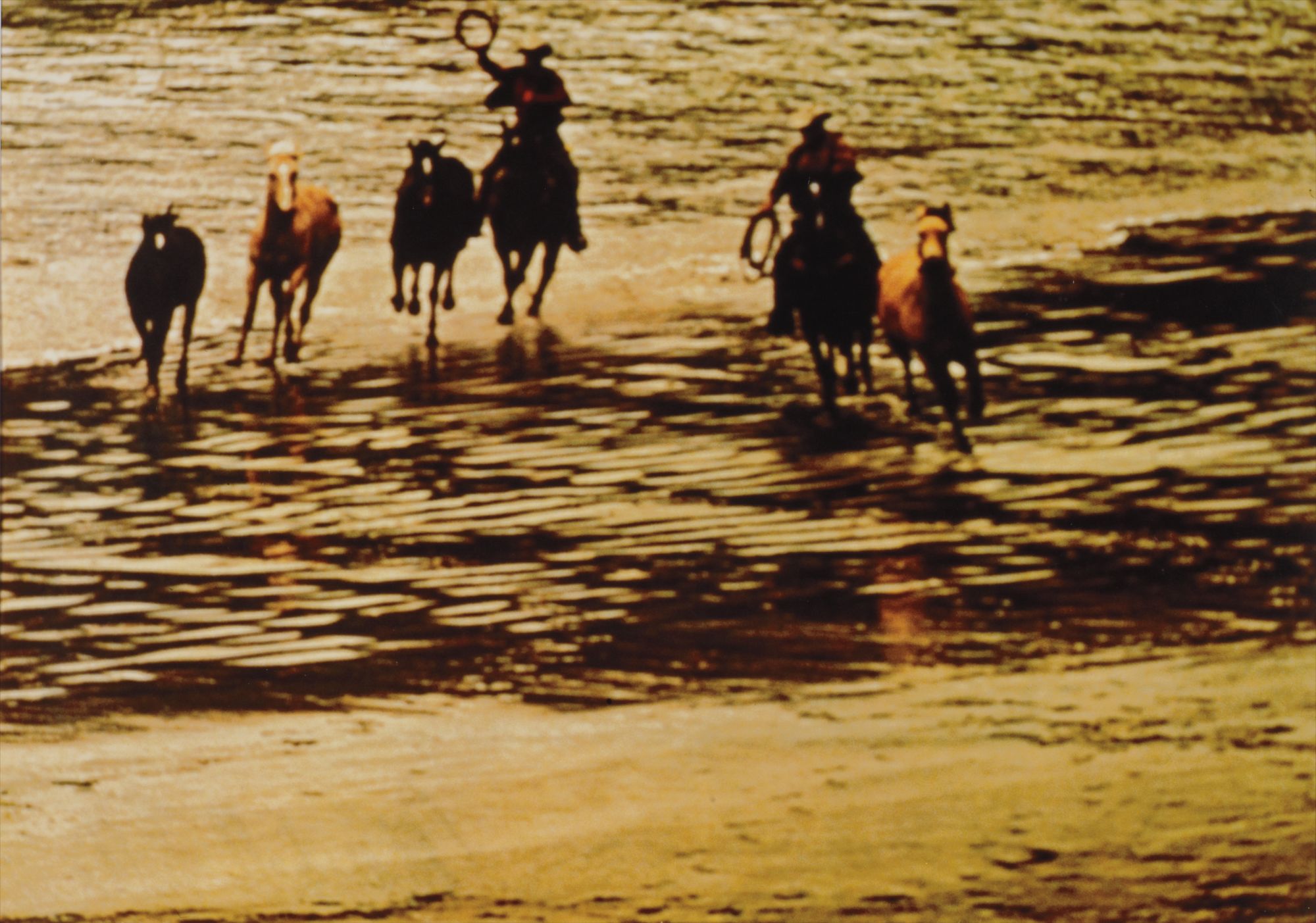

12
Richard Prince
Untitled (Cowboy)
Full-Cataloguing
Untitled (Cowboy), 1980-1984, is among Richard Prince’s most iconic works as well as one of his most emblematic images. For his Cowboys series, conceived in the early 1980s, Prince appropriated images directly from the glossy Marlboro cigarette advertisements, then re-photographed, cropped and eliminated the text, which once summoned “Come to Marlboro Country.” Through this process, Prince undermines the supposed naturalness of the image, revealing the meanings engrained therein. Further intensifying their own artifice, this subtle act of re-photographing advertising images and presenting them as his own, initiates a new, critical approach to the production of art. As a response to American consumerism and identity, Prince’s Cowboys question notions of originality, authorship and the privileged status of the unique art object. “It is now widely accepted that Richard Prince was slightly in advance of several other artists in his use of this radical method of appropriation known as re-photography, and that he played a significant role in the development of a new, oppositional type of photographic practice, critically described as postmodernist. He was part of a generation that … used photographic procedures to simultaneously redefine photography and art.” (L. Phillips, Richard Prince, New York, 1992, p. 28).
The photographic practice—certainly since revolutionaries like Man Ray and John Baldessari—has become one of the most critical mediums in contemporary American culture. With its ever-changing technical parameters, the medium transcends any limitations once imposed by its two-dimensionality. Through this dual process of rephotographing, Prince not only revitalizes a populist image, but also resurrects the American cowboy from the prosaic to the extraordinary. Removed from his original advertising campaign, the lonely cowboy becomes a symbol of the American dream, one full of freedoms and pleasures: “The American cowboy of the mind is a romantic, monumental pulp-fiction figure… He is Alexander the Great in chaps and boots. He is colourful, masculine to the point of caricature, a license-plate emblem, a billboard, a restaurant chain, a figure of speech indicating rough fun or brash aggressiveness. Abroad he is the representation of America, so deeply is he embedded in our national character and ethos.” (A. Proulx, Richard Prince: Spiritual America, New York, 2007, p. 284).
Functioning in the public imagination as a symbol of power, strength and masculinity, the cowboy is an icon of American sovereignty. The Marlboro men exemplify this archetype, amplified by backdrops that draw from the traditions of American landscape painting and the spectacle of Hollywood’s Spaghetti Westerns. The present lot, Untitled (Cowboy), 1980-84, frames a scene comprised of ochre, burnt sienna, black and orange; warm hues that situate Prince’s subject matter at the cusp of dusk. Streaming down from the upper half of the composition, a small heard of galloping horses are pursued by two cowboys. Glints of the sun’s reflection permeate the center of the photograph, leading our gaze to an extended lasso, held up like a golden ring. Indeed, lassos in hand and poised for action, the cowboys appear to be both chasing and guiding the majestic horses through a wide body of water, an allegory of the American dream.
Prince offers varied perspectives of the cowboy in this renowned series and through these varied pictures, a storyboard of the cowboy’s mysterious existence and thrilling narrative is perpetuated. There are no details of the cowboys’ identities in the present lot; they are backlit by the sun, faces obscured by the brims of their hats. In this way, they represent America’s “most undeniable image of itself, and as such, pass thorough culture with no friction. They are dismissible generic signifies, and at the point when Prince chose them, they had ceased even to be employed as ubiquitous ads for Marlboro cigarettes; they had been cut loose and were resting somewhere in the sediment of culture.” (R. Brooks, “A Prince of Light or Darkness?,” Richard Prince, London: Phaidon, 2003, p. 56). Indeed, undaunted by the unpredictable environment and impending nightfall, our cowboys, like mythical America, press onward.
Richard Prince
American | 1947For more than three decades, Prince's universally celebrated practice has pursued the subversive strategy of appropriating commonplace imagery and themes – such as photographs of quintessential Western cowboys and "biker chicks," the front covers of nurse romance novellas, and jokes and cartoons – to deconstruct singular notions of authorship, authenticity and identity.
Starting his career as a member of the Pictures Generation in the 1970s alongside such contemporaries as Cindy Sherman, Robert Longo and Sherrie Levine, Prince is widely acknowledged as having expanded the accepted parameters of art-making with his so-called "re-photography" technique – a revolutionary appropriation strategy of photographing pre-existing images from magazine ads and presenting them as his own. Prince's practice of appropriating familiar subject matter exposes the inner mechanics of desire and power pervading the media and our cultural consciousness at large, particularly as they relate to identity and gender constructs.